Plants that don't need sun bring nature's beauty and vitality into your indoor and outdoor spaces. Such plants bring nature's beauty and tranquillity into areas with little to no sunlight, which is an essential requirement for plant growth. Learn some indoor and outdoor plants that don't need the sun and require minimal keep to thrive. Lisa Eldred Steinkopf, popularly known as the Houseplant Guru, shares her expertise in selecting and caring for low-light plants.
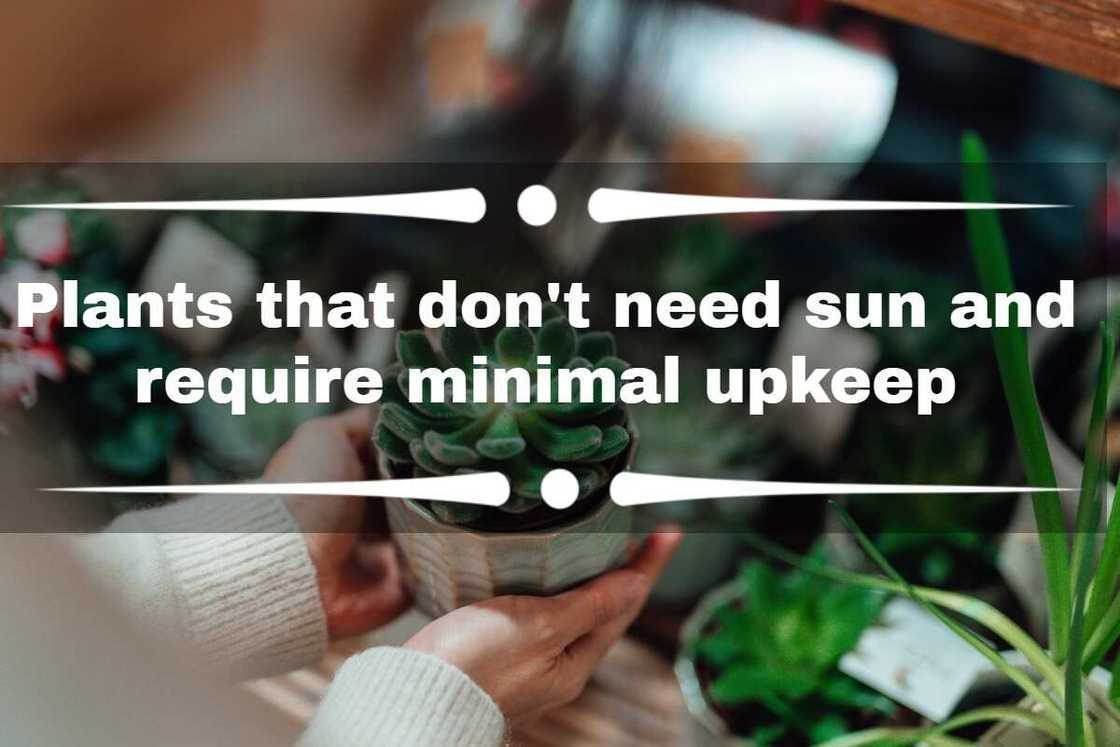
Source: Getty Images
TABLE OF CONTENTS
Houseplants in your workspaces or residential areas can enhance concentration, productivity, and overall well-being. The good thing about plants that don't need sun is that they easily thrive in a dimly lit corner of a room and require minimum upkeep.
30 houseplants that don't need sunlight
Boost your respiratory health and freshen up your room with these beautiful and air-purifying houseplants. Check out the houseplants shared below that will transform your room into a revitalizing oasis.
Indoor plants that don't need sun
Besides enhancing beauty in your home, these indoor plants can also help purify the air by absorbing pollutants. Have a look at some of the houseplants that don't need sunlight and little care.
1. Snake plant
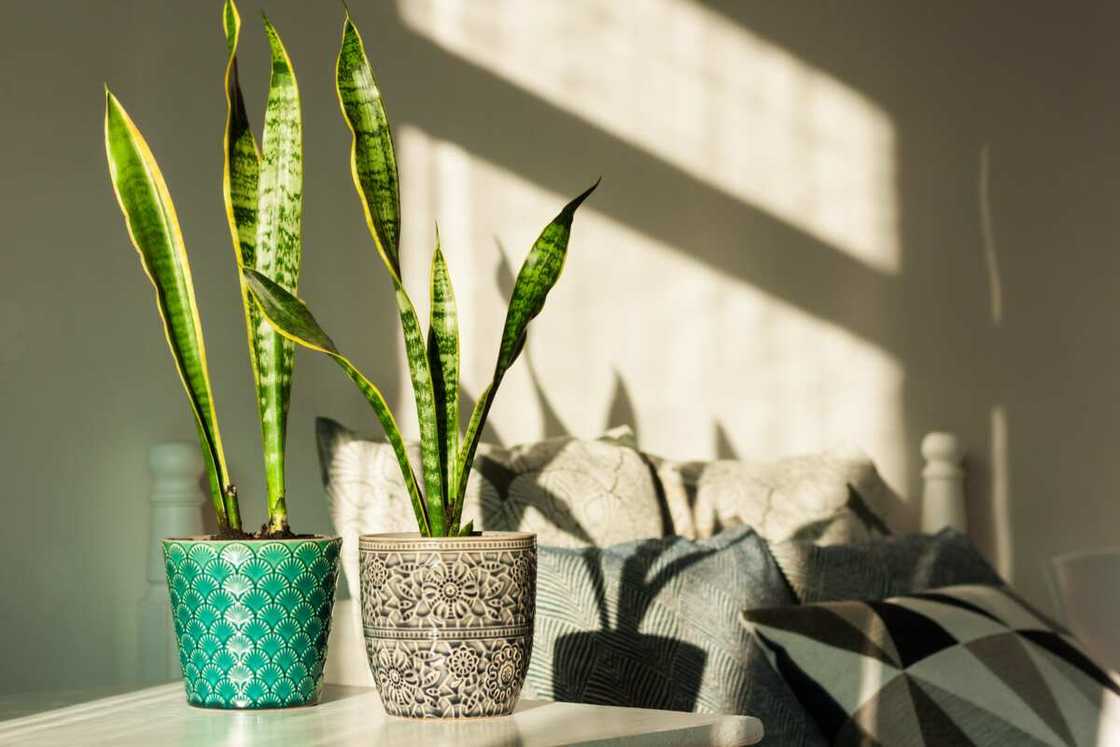
Source: Getty Images
The snake plant is among the small plants that don't need the sun to grow and keep. It is also known as sansevieria or Mother-in-Law's Tongue. The houseplant is loved by many because of its long, upright leaves that resemble sword blades.
2. Parlor palm
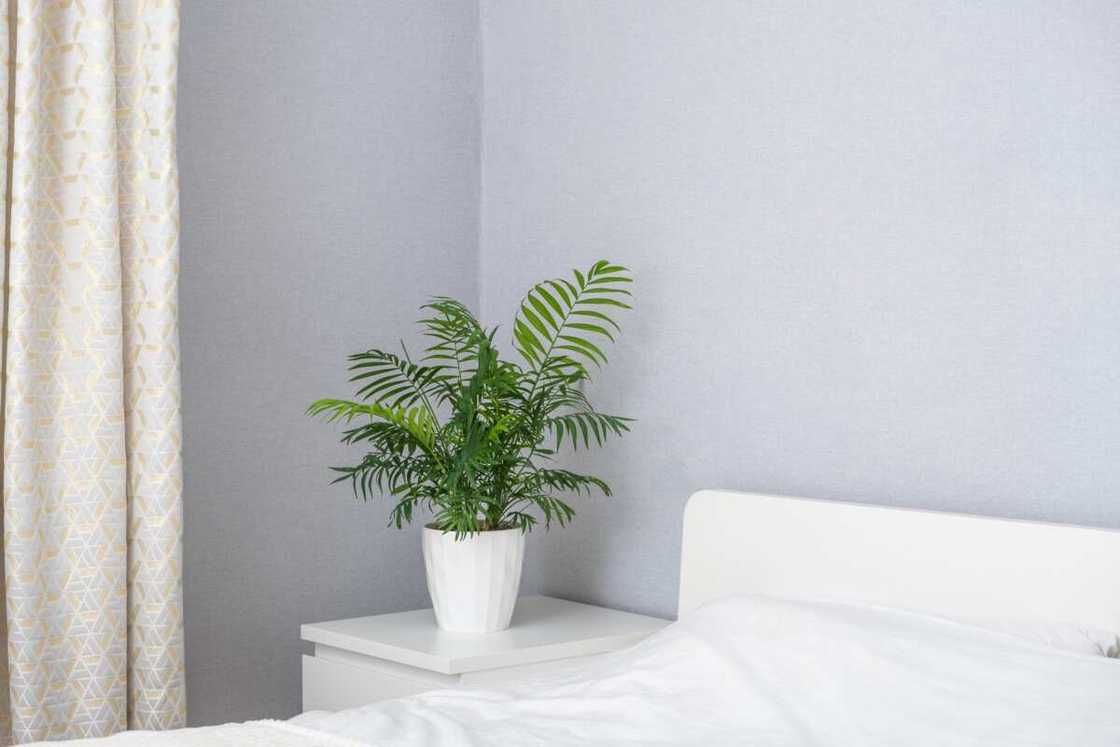
Source: Getty Images
The houseplant is famous for its arching fronds and feathery appearance giving it a tropical appearance. The plants thrive in low-light conditions, perfect for dimly lit rooms. They also thrive well in well-lit rooms or near windows with filtered sunlight.
3. Weeping fig
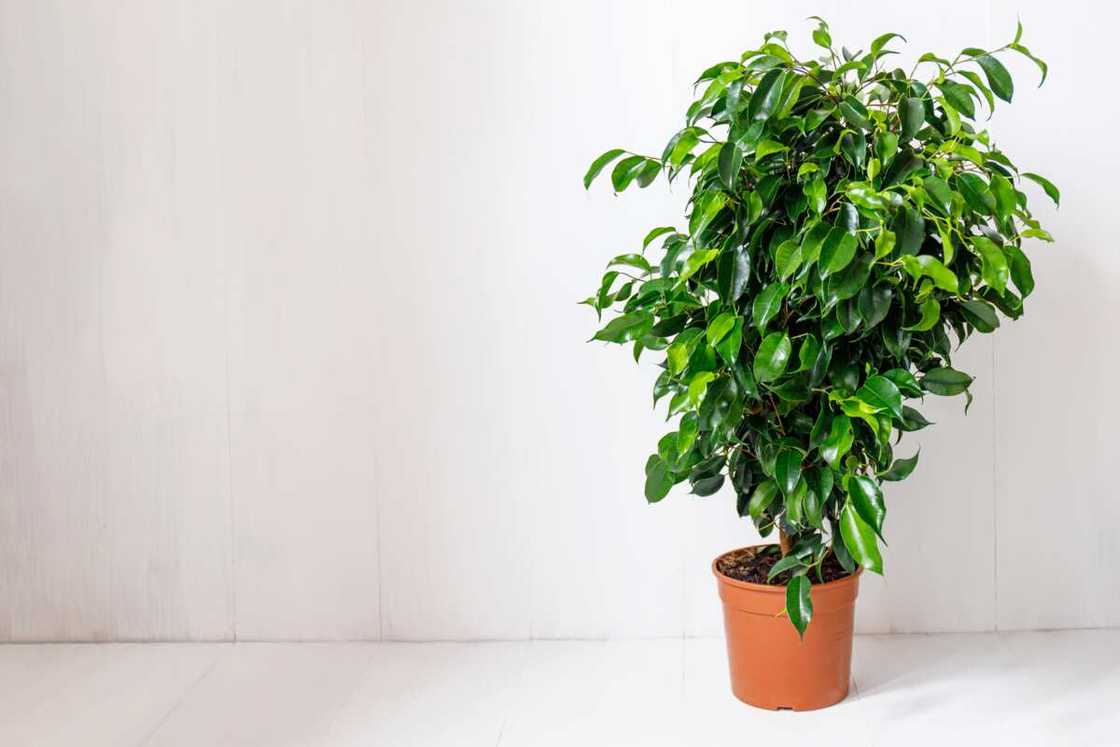
Source: Getty Images
It is also known as Ficus benjamina. The houseplant has graceful drooping branches and glossy, dark-green leaves. They thrive in indirect light but can tolerate lower light conditions, making them a perfect indoor plant choice.
4. Spider plant
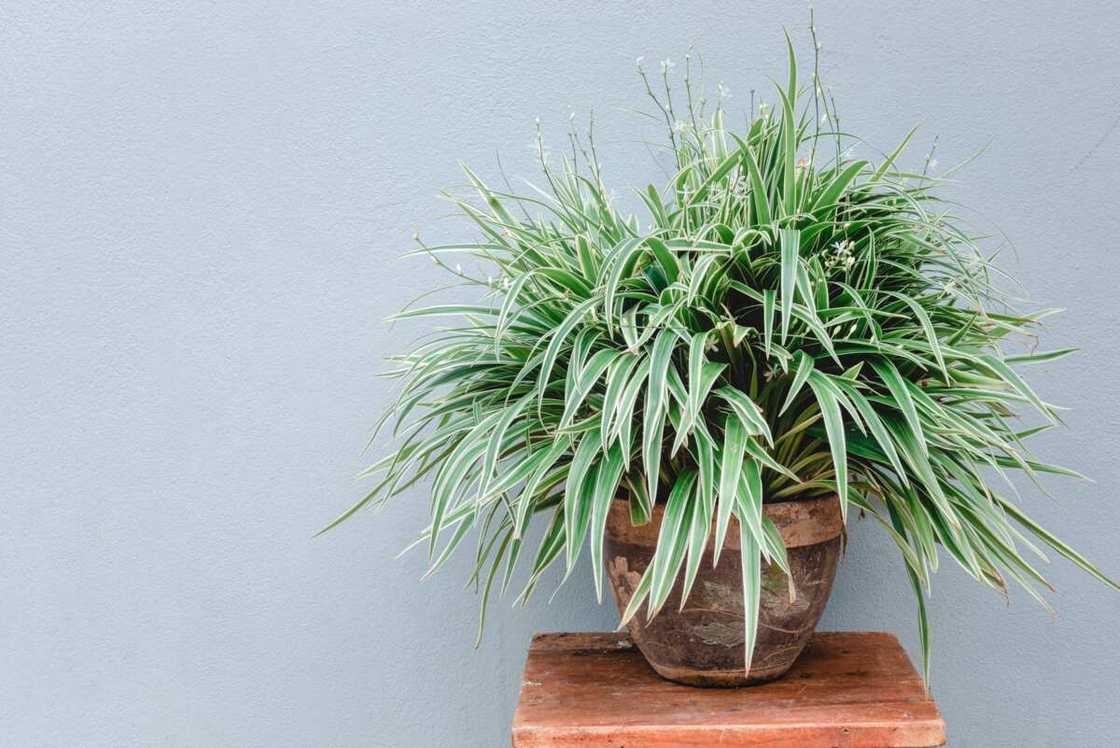
Source: Getty Images
The Spider plant can thrive well in various lighting conditions, from bright, indirect, and lower light areas. It has distinctive arching leaves and cascading plantlets that resemble spider legs.
5. Pothos
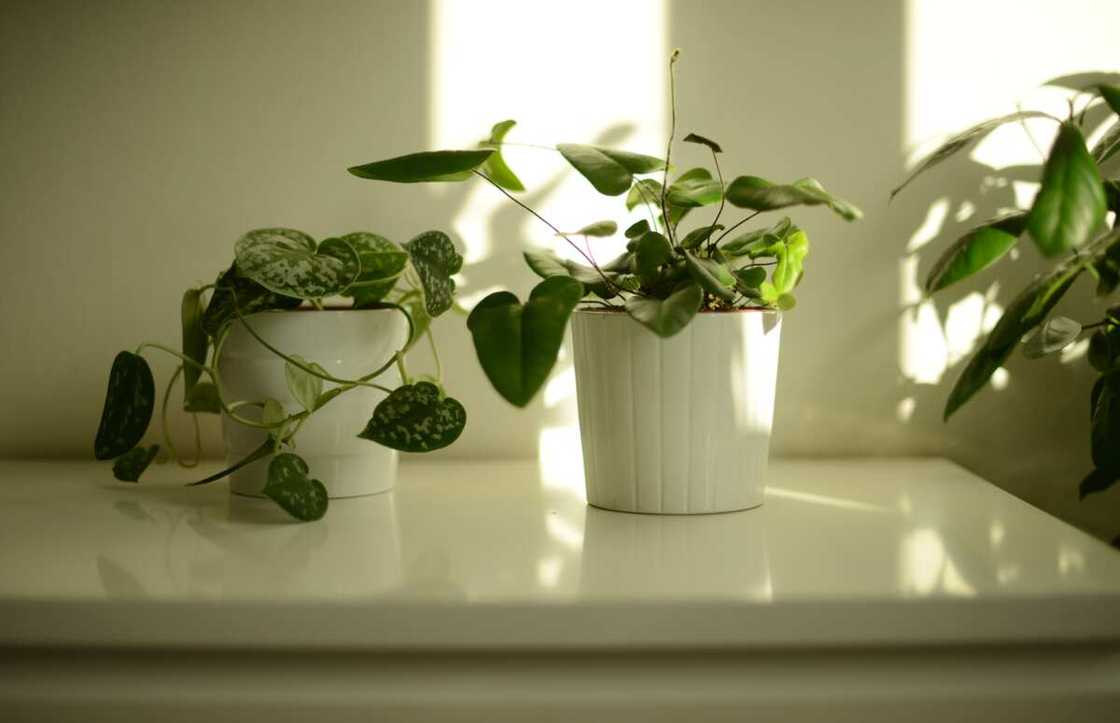
Source: Getty Images
Pothos is a popular vining plant known for its lush green and trailing leaves. The plant can be trained along trellises or grown in a hanging basket. They are excellent air purifiers, effectively removing toxins from indoor air.
6. Maidenhair fern
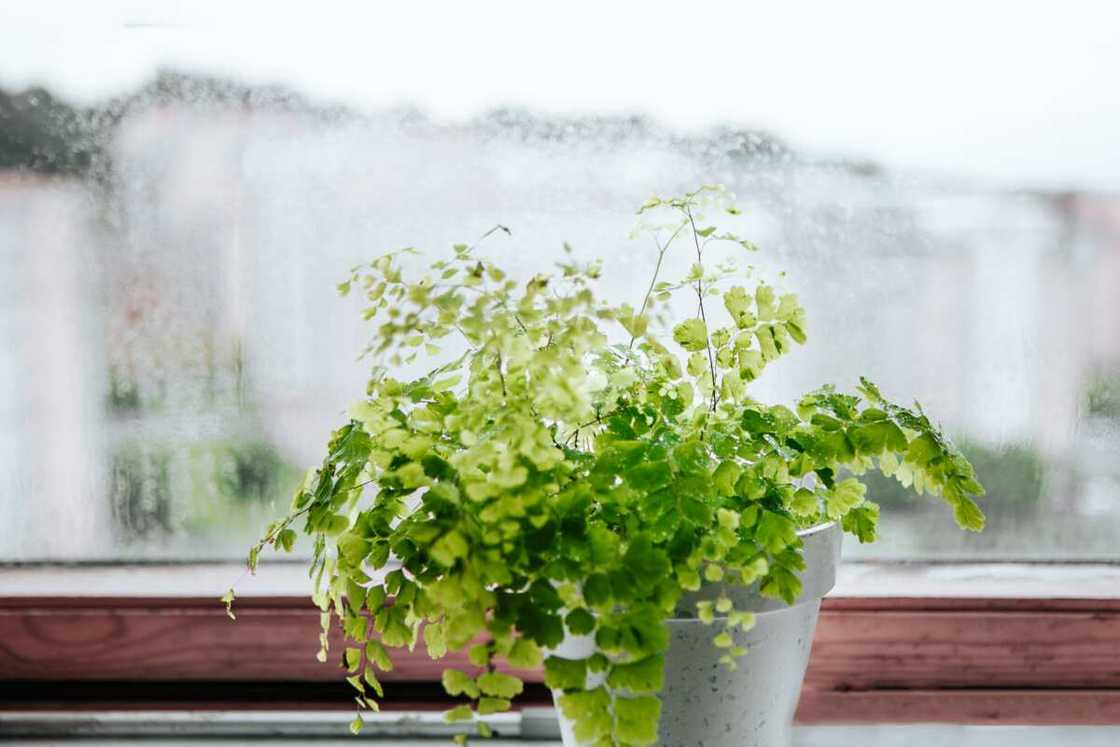
Source: Getty Images
Maidenhair Fern is scientifically known as Adiantum, a plant with fan-shaped fronds and an airy appearance. It is one of the easy-to-grow houseplants that don’t need sunlight. The plant requires higher humidity levels, which calls for keeping the soil evenly moist.
7. Corn plant
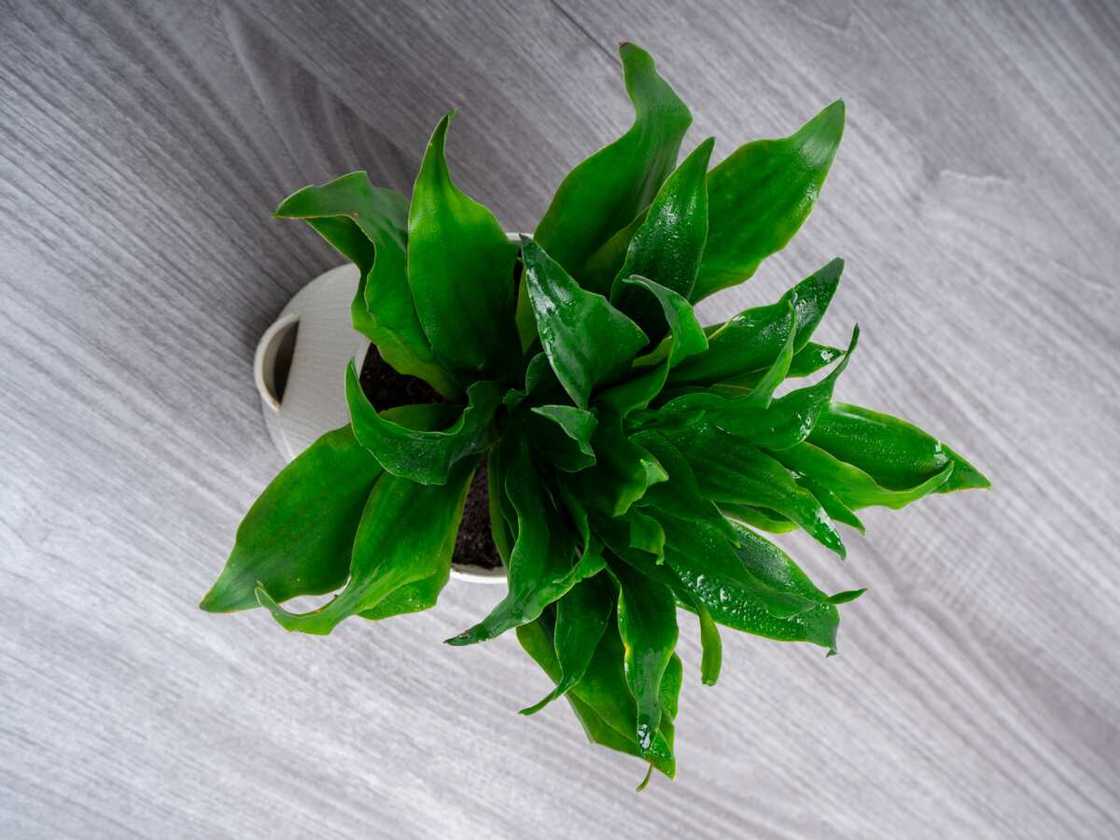
Source: Getty Images
It can be grown in various indoor environments as it can tolerate multiple light conditions, from bright indirect light to lower light areas. They have long, thick, arching leaves that resemble cornstalks. They require moderate watering.
8. Lucky bamboo
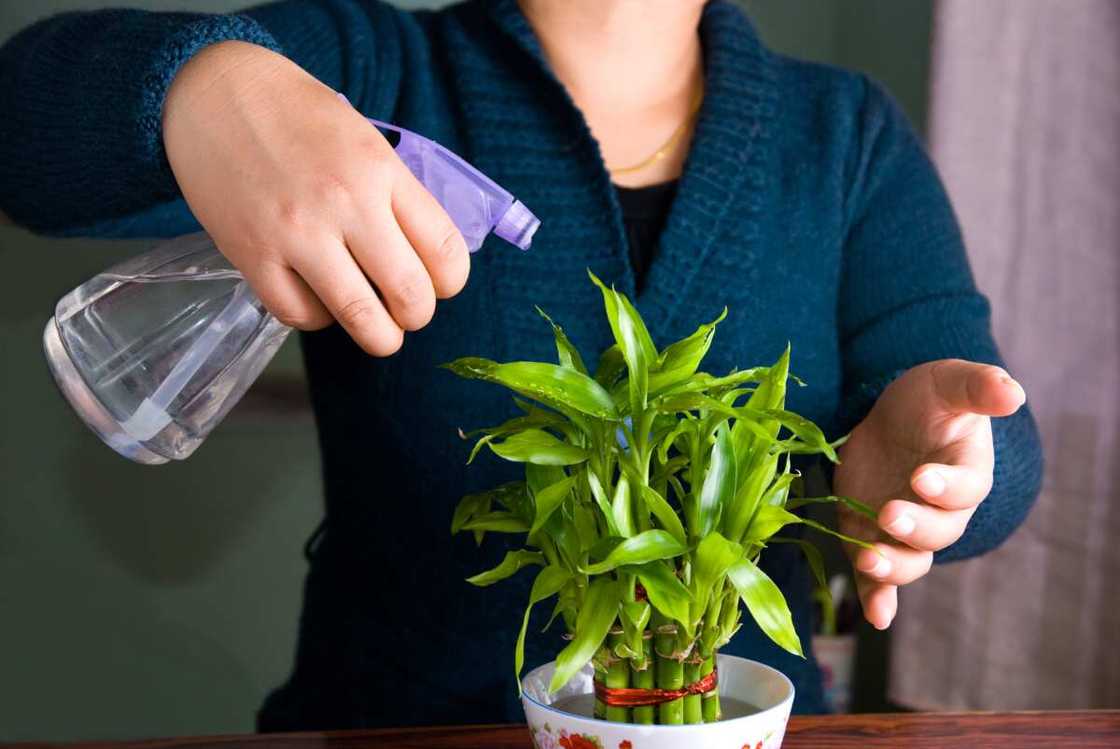
Source: Getty Images
Also known as Dracaena sanderiana, it is a popular houseplant valued for its long, slender stems with lush green foliage. In some cultures, it is known for its symbolism of good luck, prosperity, and positive energy.
9. Peace lily
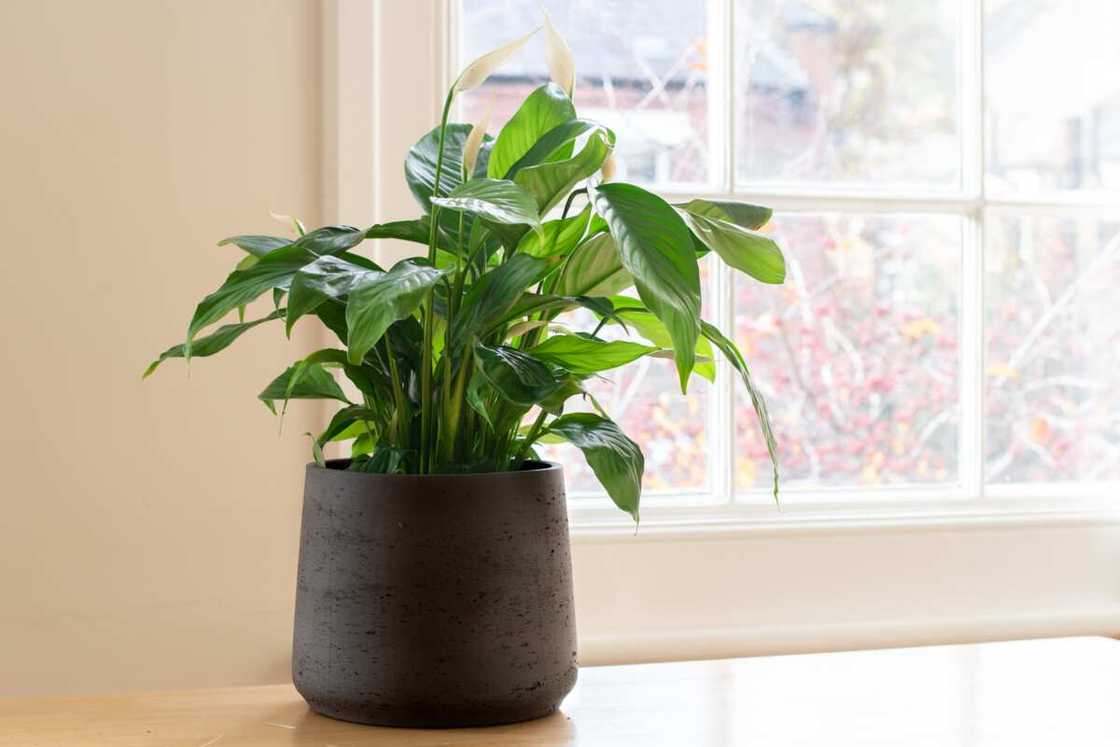
Source: Getty Images
Its scientific name is Spathiphyllum. It is one of the most beautiful houseplants you could have in your home. You should water them at least once every two weeks to prevent them from drying up. They are also known for their air-purifying qualities.
10. Aglaonema
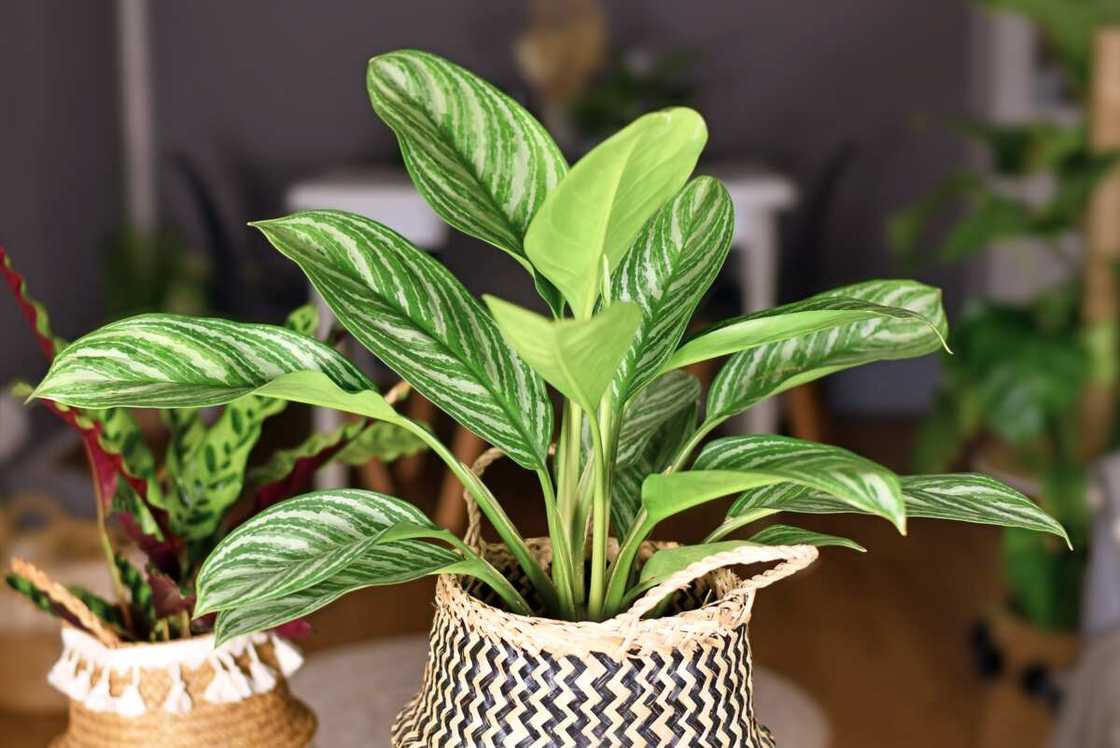
Source: Getty Images
It is a popular and versatile houseplant appreciated for its broad, lance-shaped leaves that come in various striking patterns and colors. It is one of the houseplants that don't need sunlight and requires low maintenance.
Office plants that don't need sun
Having office plants offers numerous benefits, including improved air quality, increased productivity, stress reduction, and enhanced creativity. Here is a list of office hard-to-kill houseplants that don't need sunlight to grow and keep.
11. Haworthia
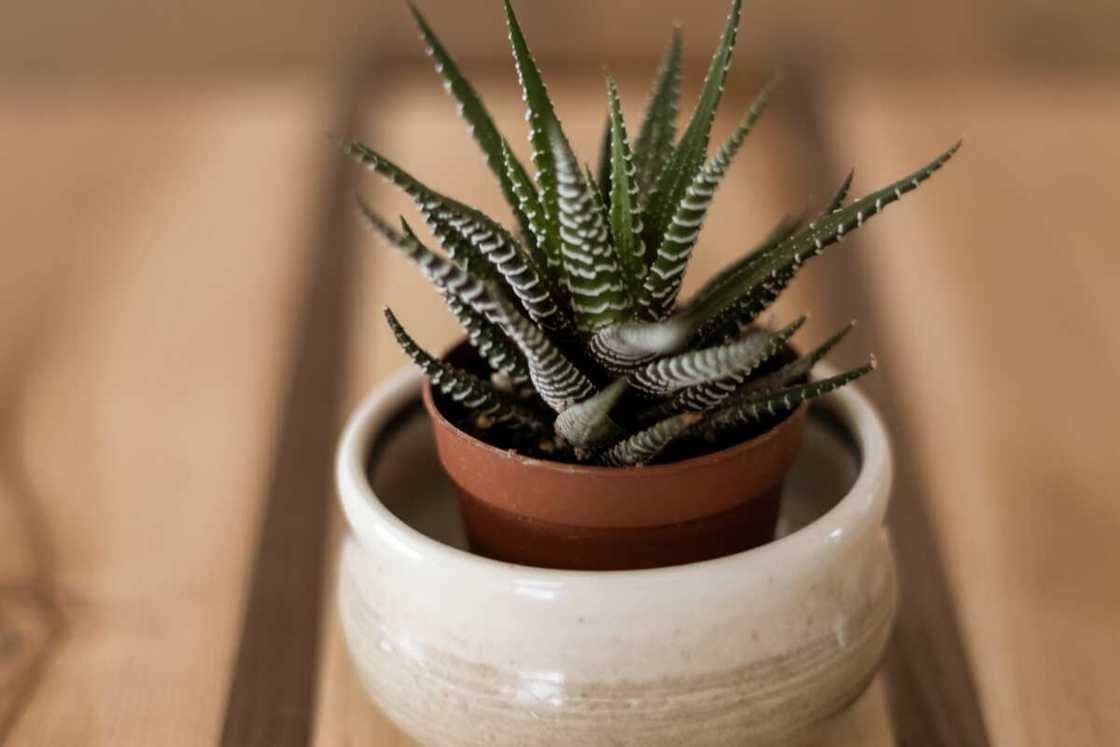
Source: Getty Images
Haworthia is a succulent houseplant known for its rosette-like growth habit. They orginate in southern Africa and have gained popularity as houseplants because of their attractive look and low-maintenance nature. It can thrive in bright, indirect light, or lower light conditions.
12. Monstera
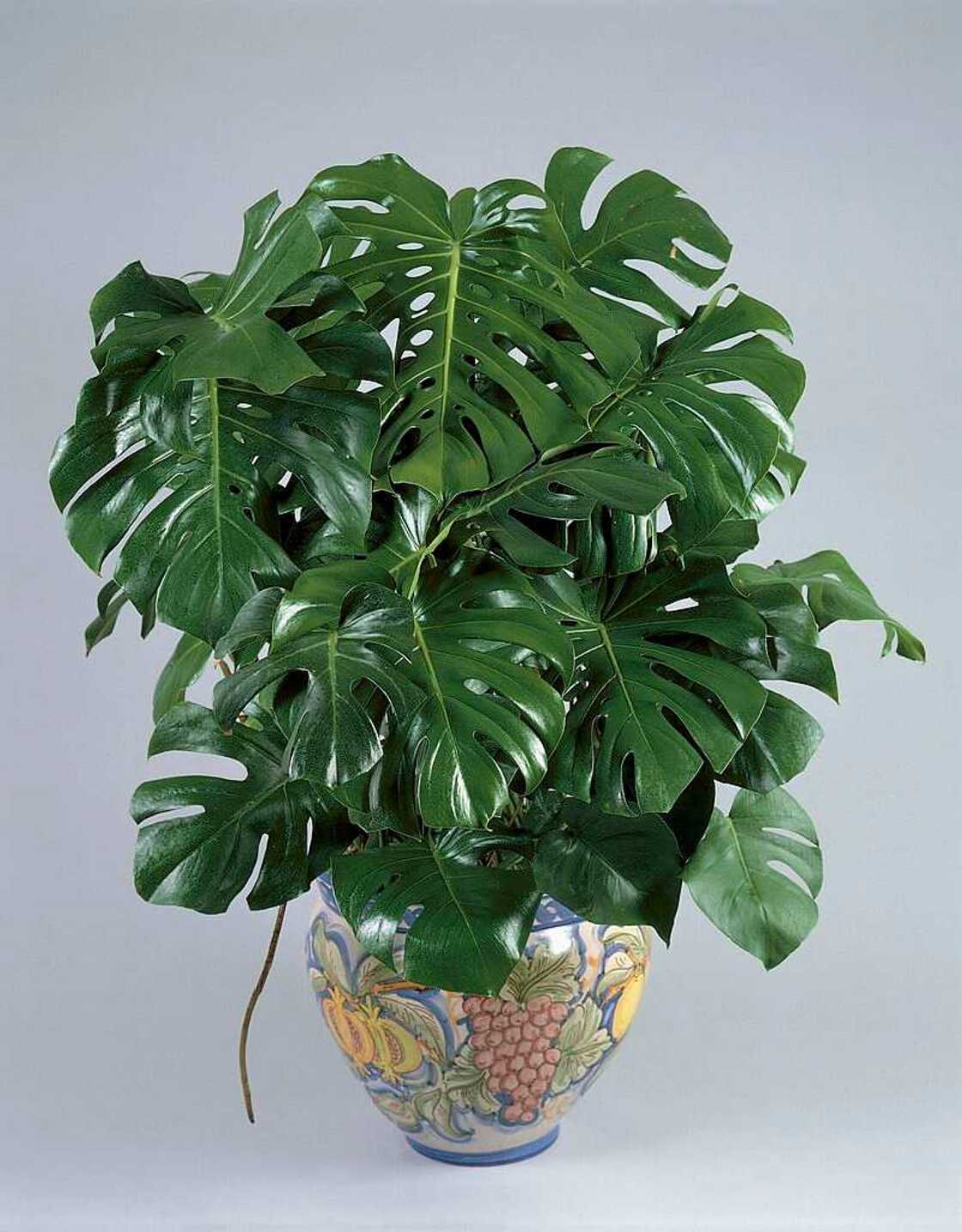
Source: Getty Images
Monstera deliciosa is known for its large, glossy, and uniquely shaped leaves. They require regular watering allowing the soil to dry out between waterings partially. Monstera houseplant can develop into impressive sizes, creating a jungle-like ambience in any office.
13. Dumb cane
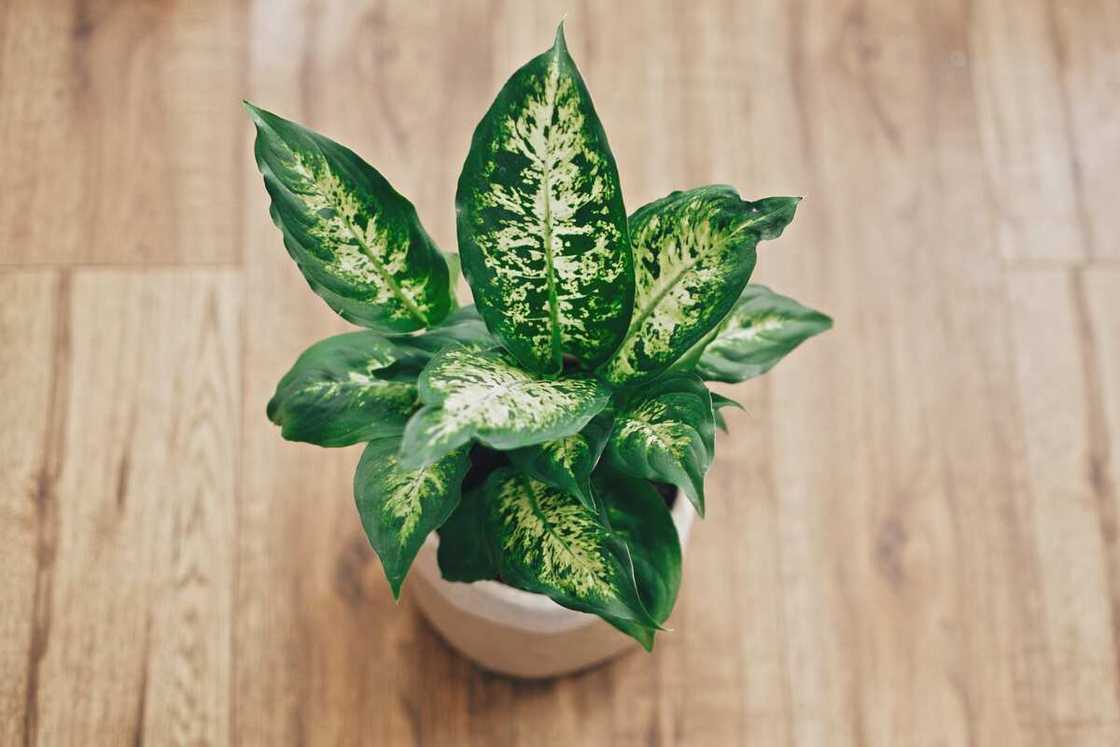
Source: Getty Images
This one is also known as Dieffenbachia. It is known for its lush, tropical foliage. As its name suggests, it can cause temporary loss of speech if ingested. It best thrives in areas with little humidity and low temperatures.
14. Rubber tree plant
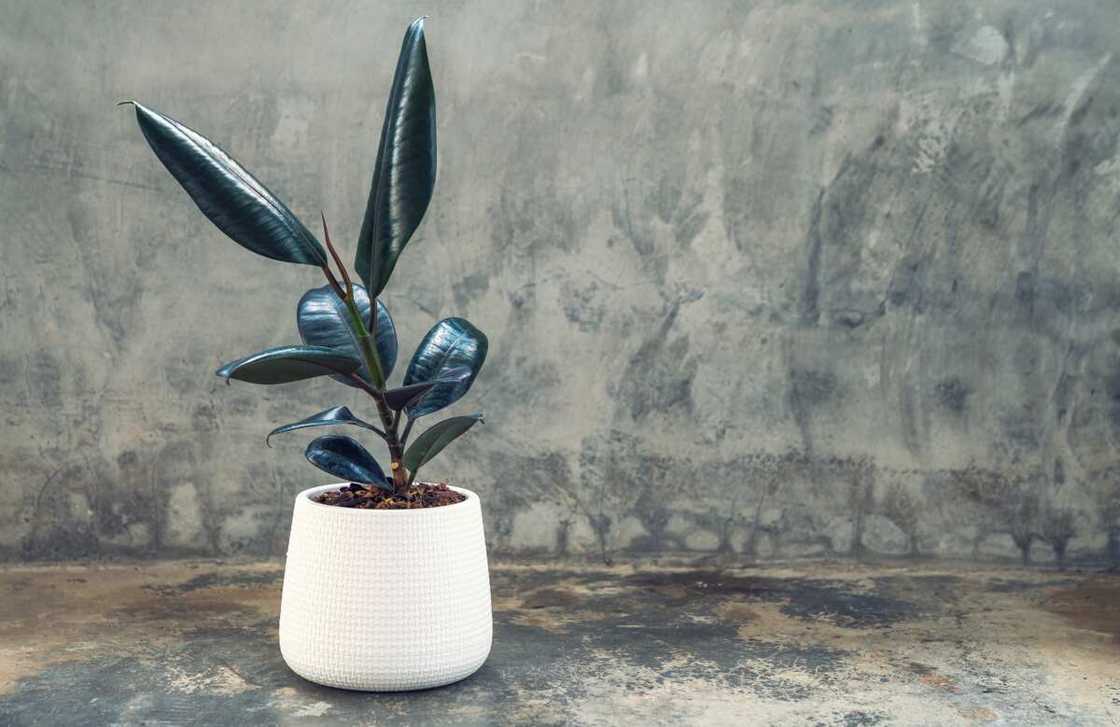
Source: Getty Images
It is a popular houseplant known for its attractive glossy leaves and striking appearance. Ficus elastica produces a milky latex sap when damaged or cut, hence its name. The houseplant requires regular watering to maintain its visually attractive foliage.
15. Aloe vera
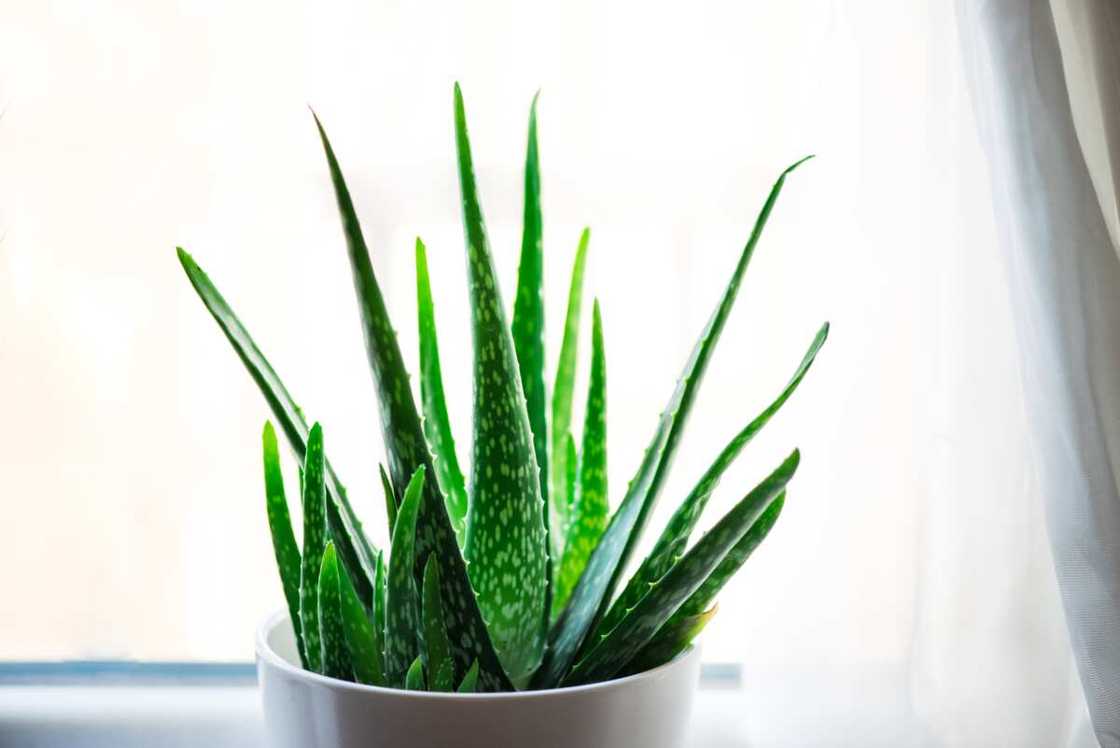
Source: Getty Images
Aloe Vera is loved by many because of its many uses in medicinal and skincare properties. It is drought-tolerant and requires minimal watering. It is known for its thick, spiky leaves and its gel-like sap.
16. Aspidistra elatior
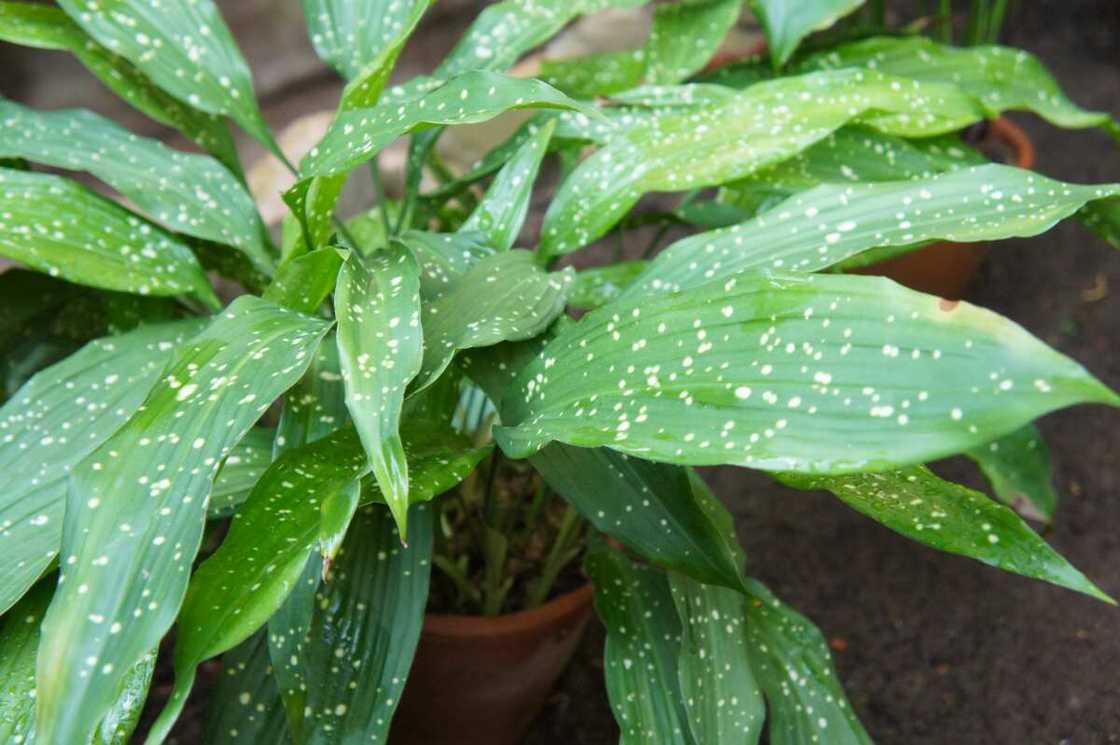
Source: Getty Images
This resilient houseplant is known for its ability to thrive in low light and neglectful conditions. It is one of the hard-to-kill plants that don't need sunlight. The plant has broad, dark-green leaves that are leathery in texture and can grow up to a foot in length.
17. Dracaena
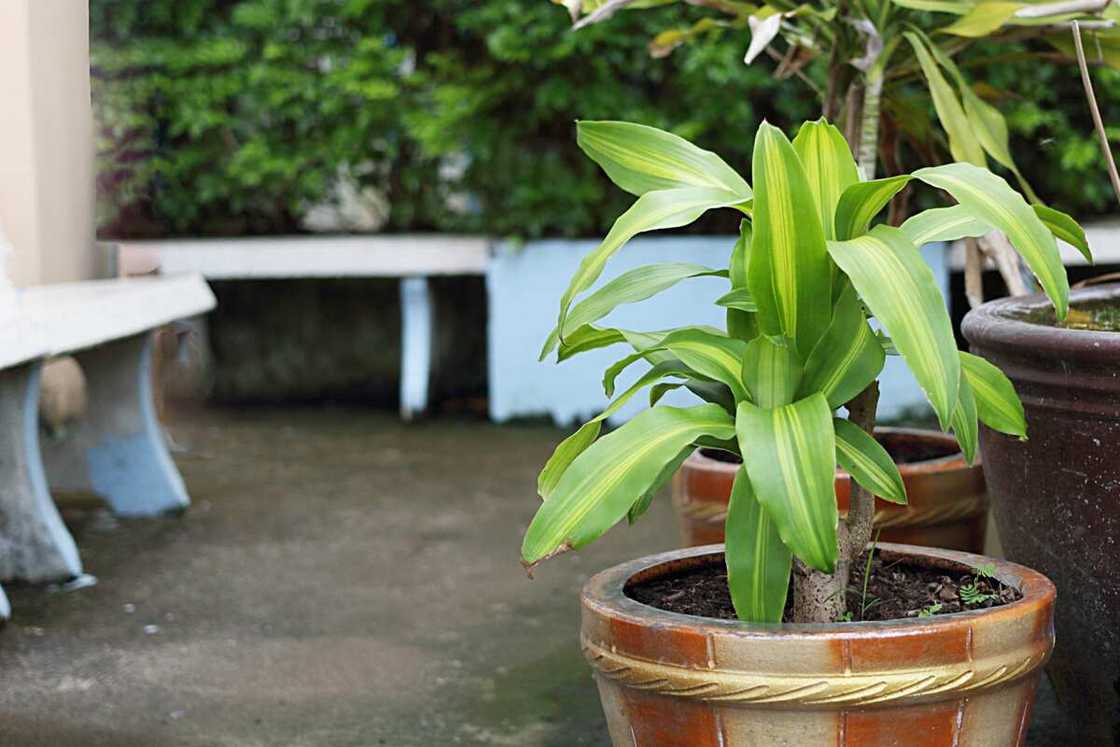
Source: Getty Images
The plant is native to tropical regions of Africa and is known for its air-purifying qualities. They prefer well-draining soil and regular watering. Dracaena plants make beautiful additions to any office and effectively improve indoor air quality.
18. English Ivy
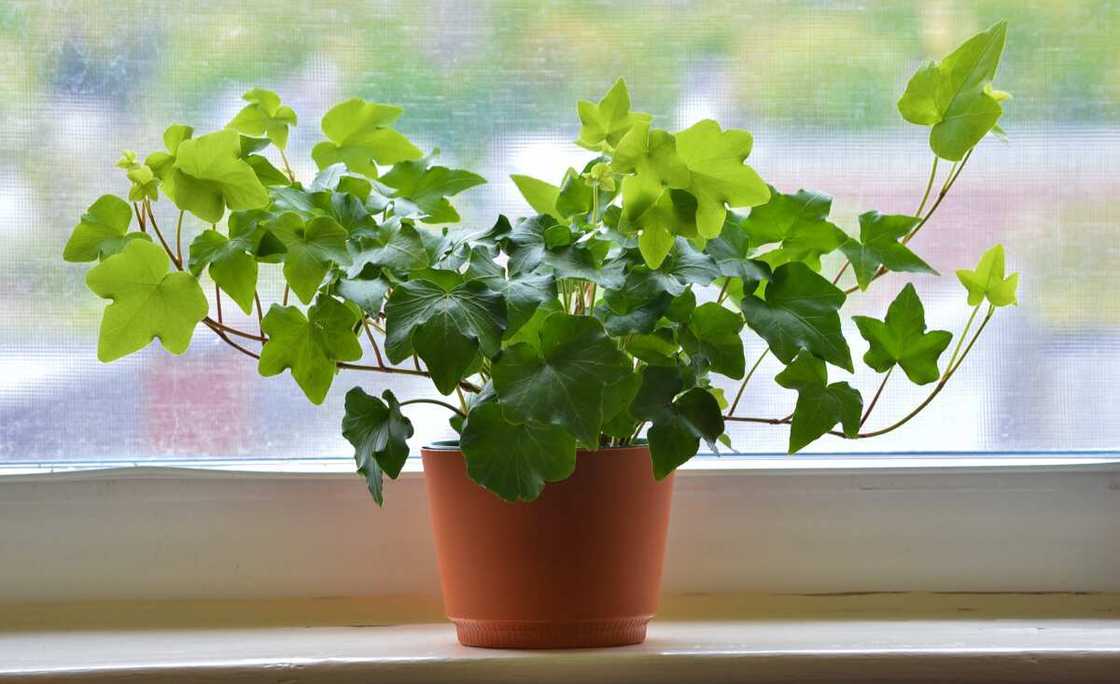
Source: Getty Images
English Ivy is known for its dark green, glossy foliage and ability to climb walls or other surfaces. It originates in Europe and Western Asia. It is well-suited for hanging baskets, as a ground cover, or trained to climb walls or trellises.
19. Peacock plant
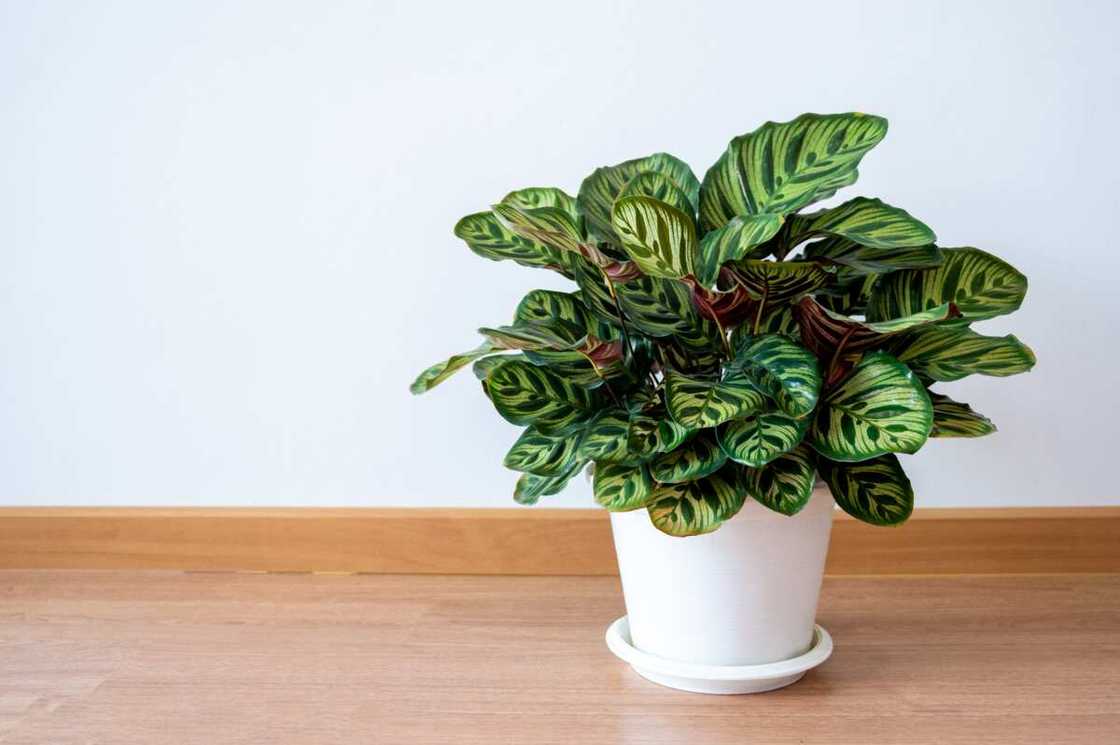
Source: Getty Images
This houseplant is known by many names, including cathedral windows and zebra plant. It is known for its ability to fold its leaves at night, creating a rustling sound that adds to its charm. It is highly valued for its decorative foliage, adding a touch of tropical elegance to any workspace.
20. Bird's-nest fern
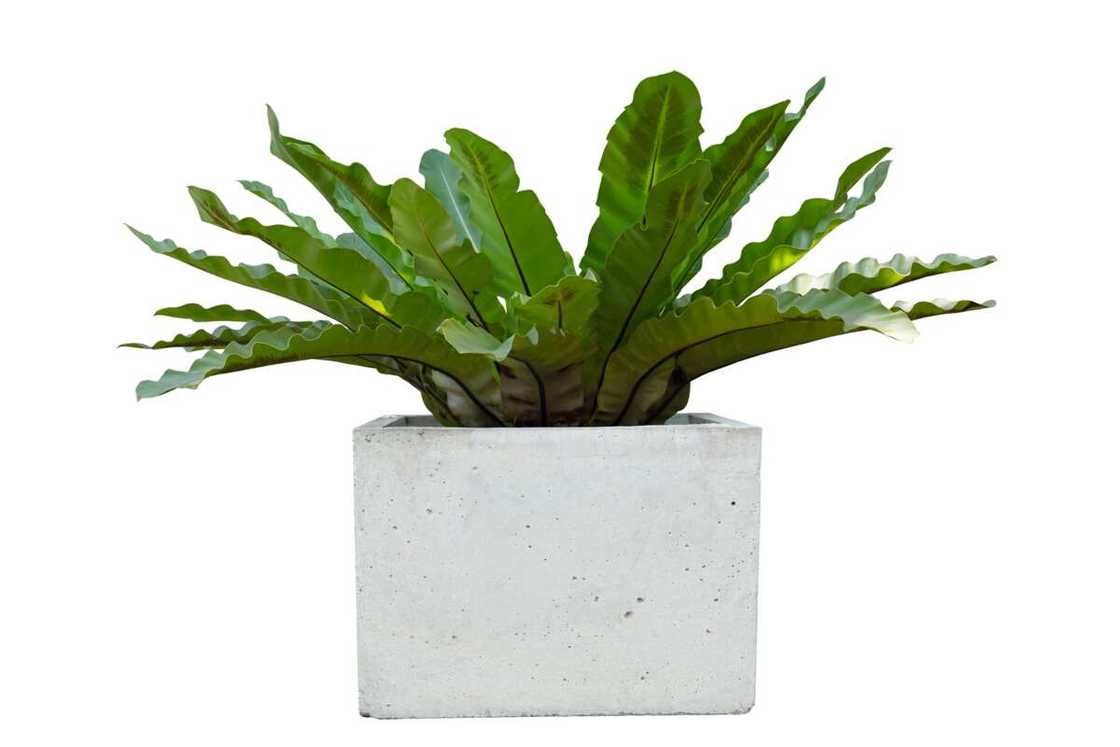
Source: Getty Images
It is scientifically known as Asplenium nidus. The houseplant has crinkly, wavy leaves with a center that resembles a crow’s nest. It thrives in bright, indirect light but can tolerate lower light conditions. Bird's-nest fern flourishes well in high-humidity areas, but care should be taken to avoid waterlogged soil.
Outdoor potted plants that don’t need sunlight
There are a variety of outdoor potted plants that you can place on your balcony, entryway, or walkway. They thrive in bright, indirect light but can tolerate lower light conditions. Below are some of the outdoor plants that don't need sunlight to flourish.
21. Peperomia
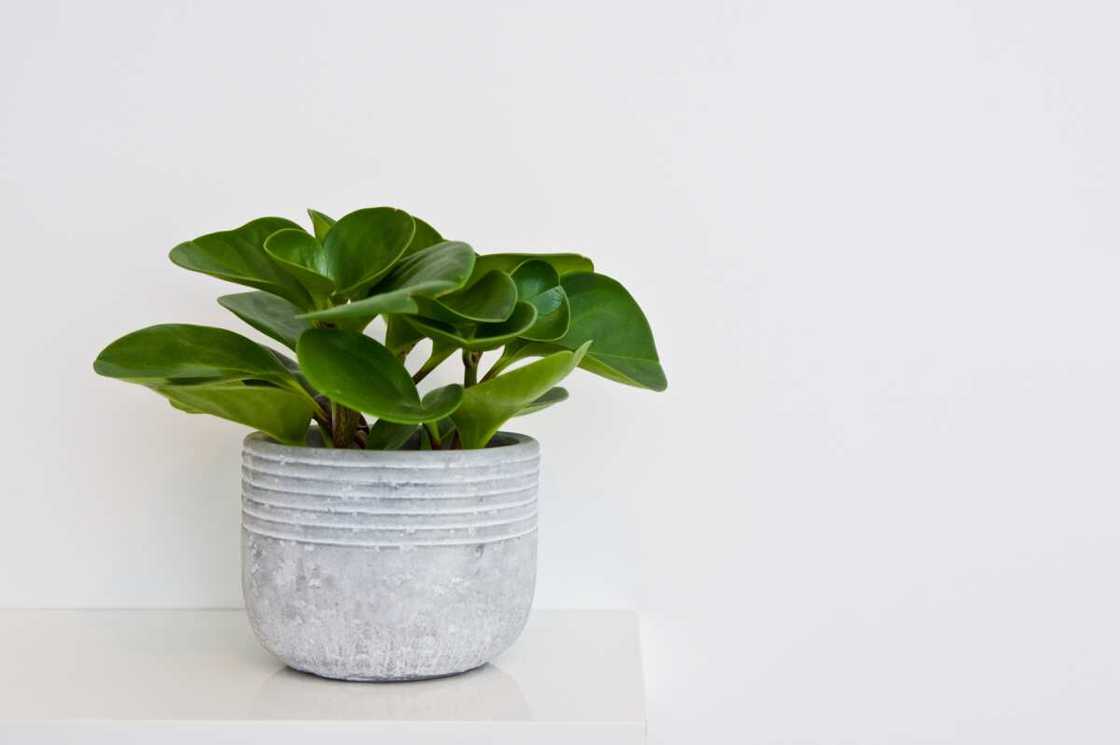
Source: Getty Images
The houseplant is known for its compact size, attractive foliage, and easy-care nature. Their leaves can be round, heart-shaped, or elongated and come in various shades of green. They are native to tropical and subtropical regions of Central and South America and some parts of Africa and Asia.
22. ZZ plant
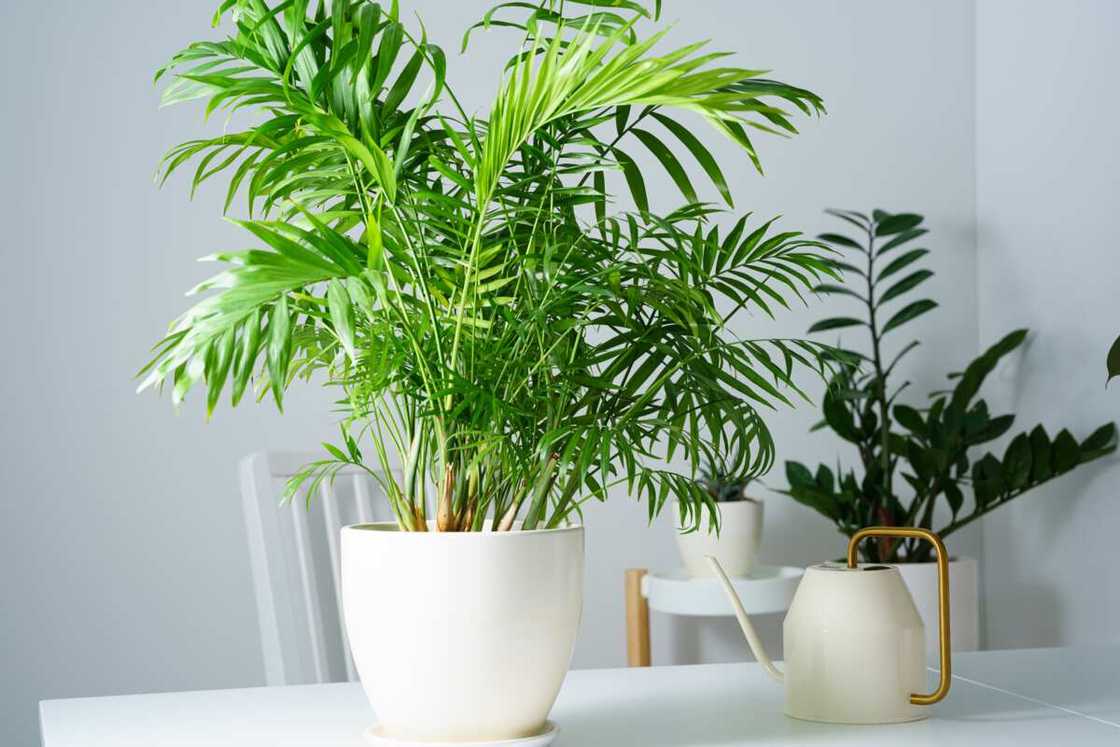
Source: Getty Images
This one has tall stems with deep green, shiny leaves. The ZZ plant is appreciated for its attractive glossy foliage and ability to thrive in low-light, brighter, indirect-light conditions. If you are looking for a houseplant that can withstand challenging weather conditions, then Zamioculcas will be the one for you.
23. Prayer plant
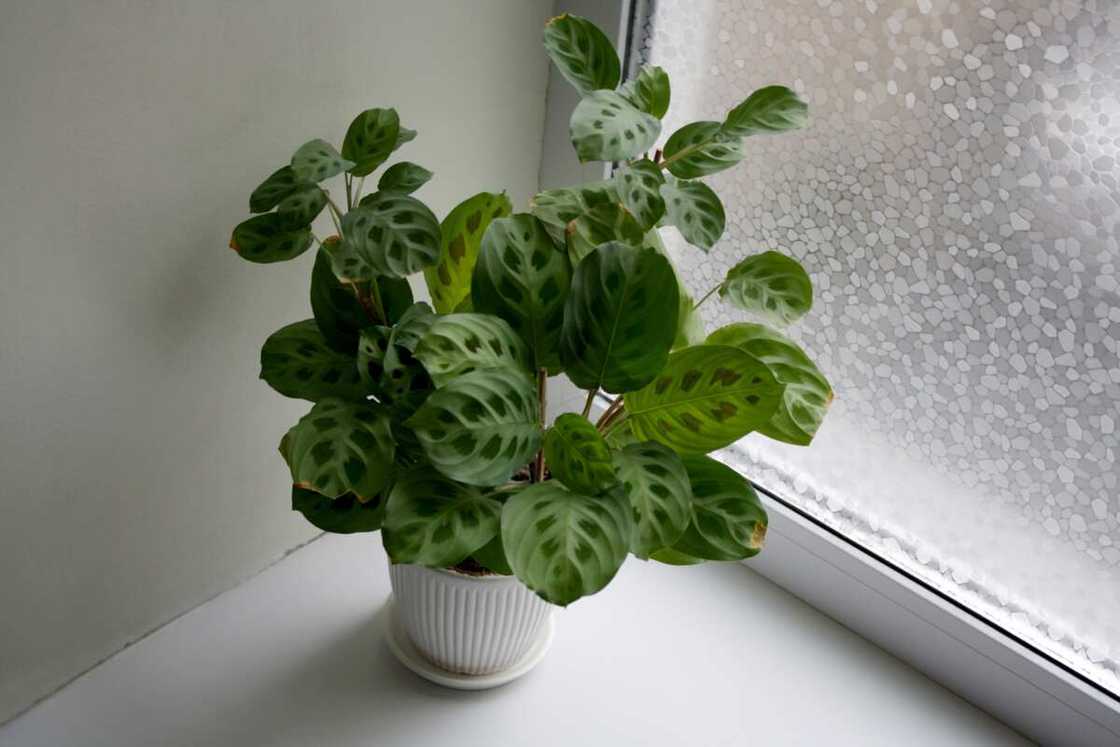
Source: Getty Images
The prayer plant is admired for its unique foliage and intriguing leaf movements. It features large, ovate leaves with beautiful patterns. The houseplant folds up at night, resembling hands in prayer, hence its common name. It requires regular watering to keep the soil evenly moist.
24. Lady Fern
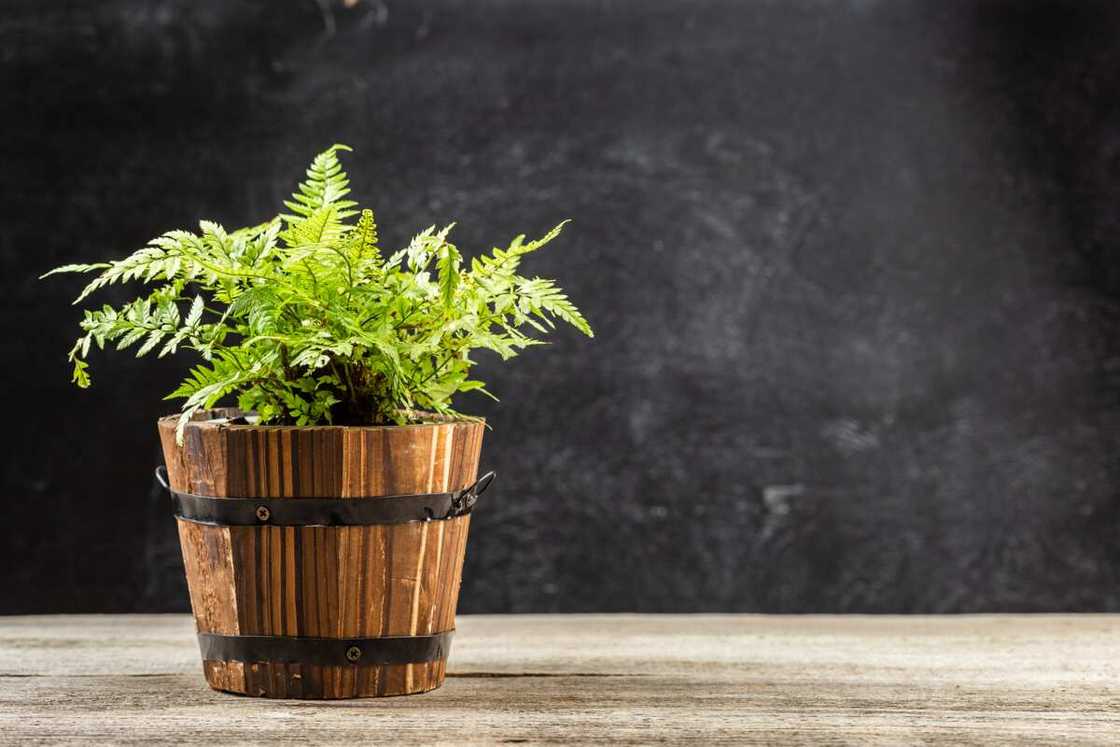
Source: Getty Images
This is one of the plants that don't need sun as they are better off with a low-light environment. It is a delicate fern species highly regarded for its lacy, feathery fronds. The houseplant prefers consistently moist soil and thrives in humid environments.
25. Nerve plant
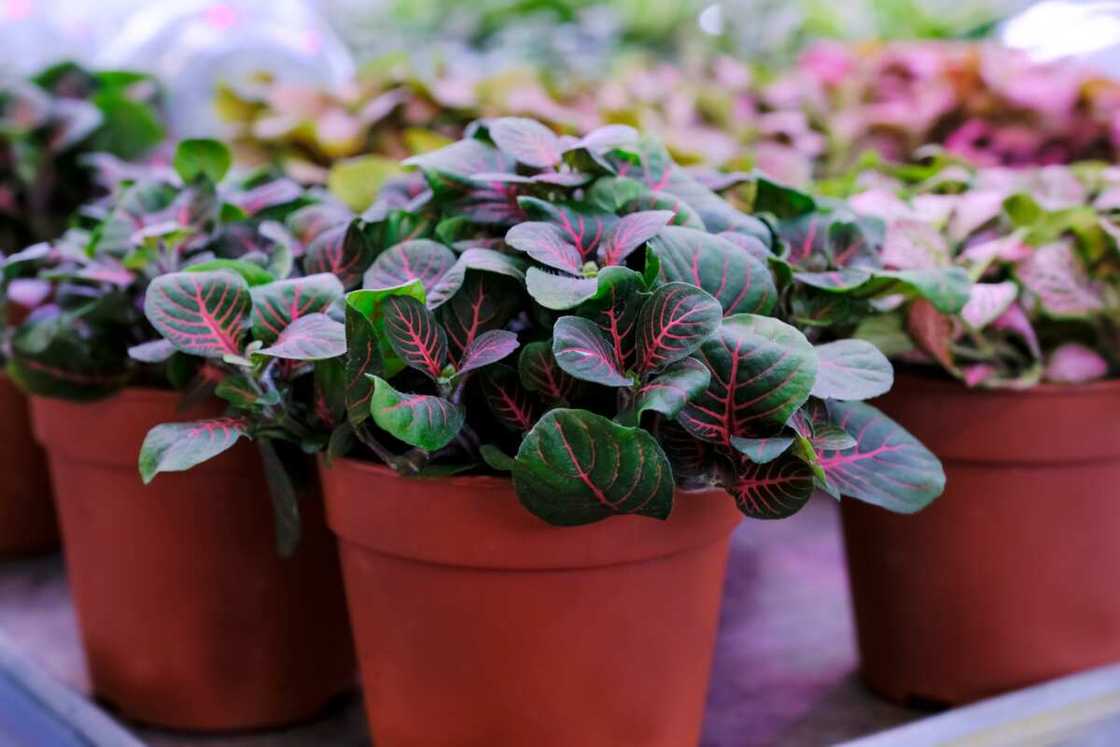
Source: Getty Images
Nerve plant (Fittonia albivenis) is another cherished houseplant known for its vibrant and colourful foliage. It gets its name from the prominent veins that run through its leaves, which resemble nerves. It grows in various shades, including green, pink, red, and white, with intricate patterns.
26. Bromeliads
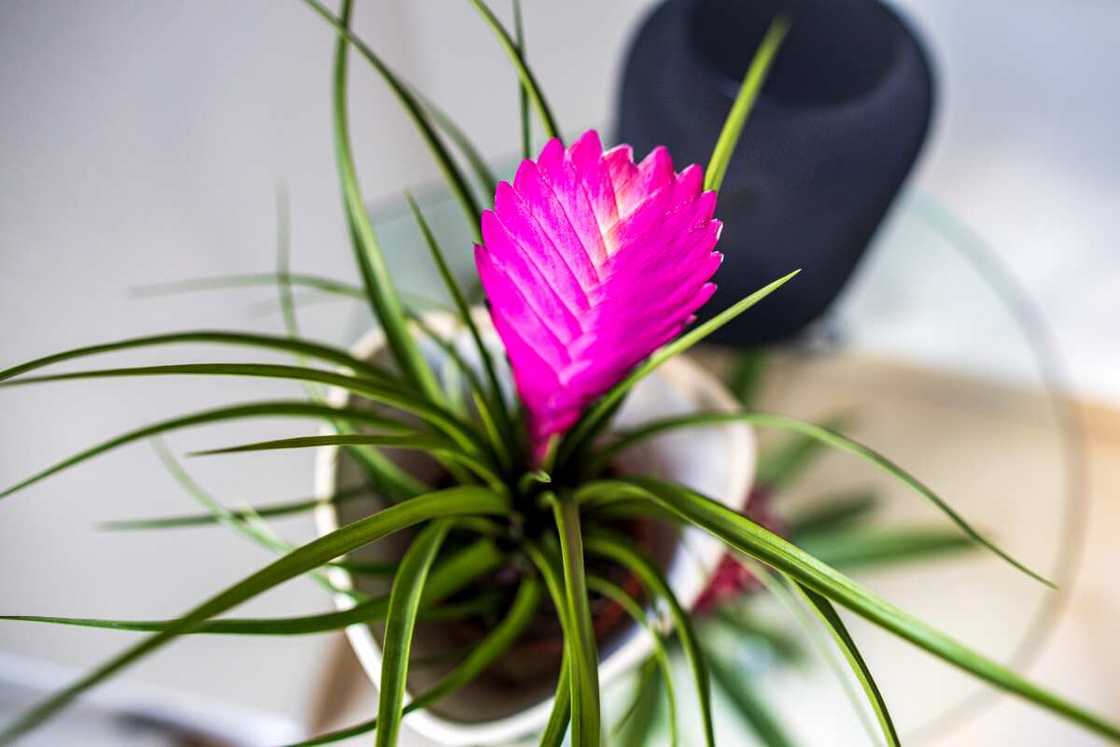
Source: Getty Images
Bromeliads (Bromeliaceae) most grows in Central and South America. The houseplant is loved by many due to its striking appearance and relatively low maintenance requirements. They are drought tolerant but need periodic misting or filling their central cups with water to keep them in good shape.
27. Rattlesnake plant
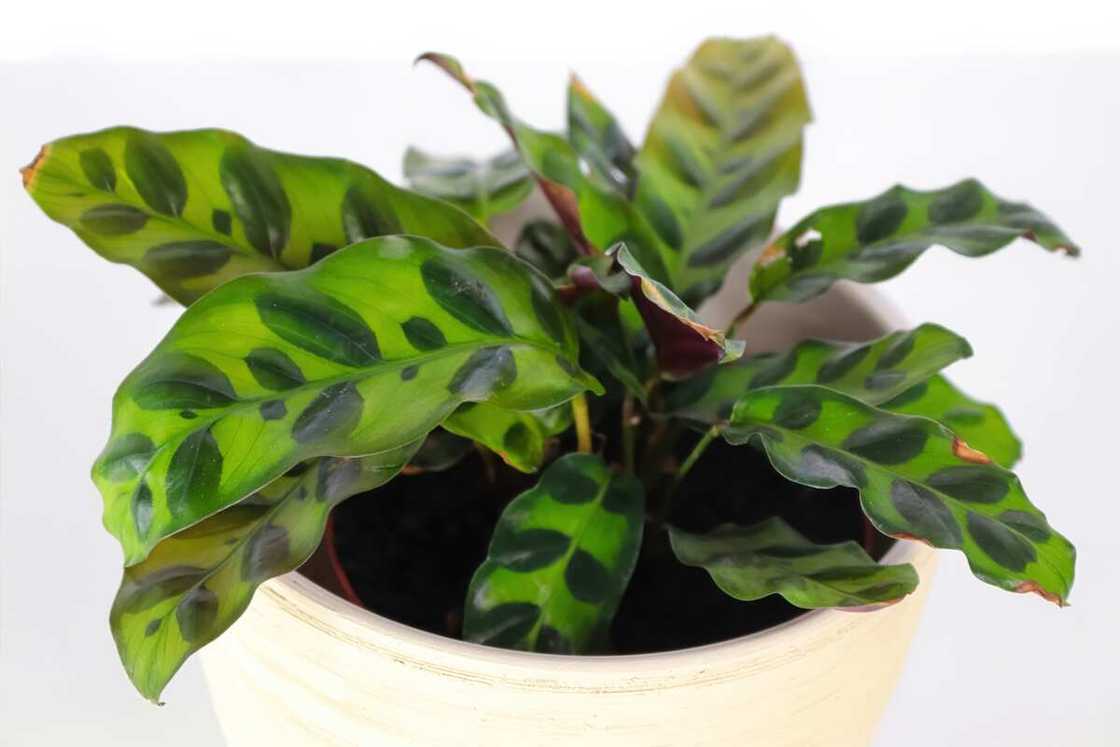
Source: Getty Images
This one is a captivating and sought-after houseplant renowned for its striking foliage and unique patterns. It gets its name from the distinctive markings on its leaves that resemble the skin of a rattlesnake. The plant thrives in bright, indirect light and prefers well-draining soil.
28. Japanese sago palm
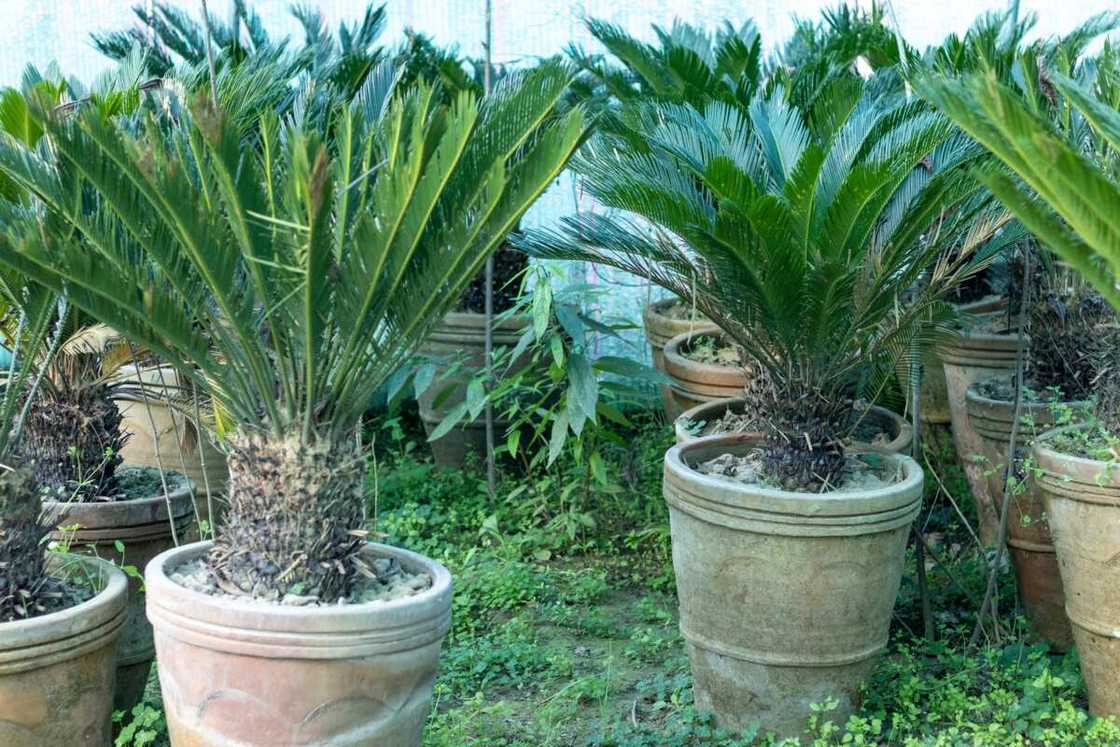
Source: Getty Images
The Japanese Sago Palm is a stunning ancient plant with a symmetrical crown of dark green, feathery, and highly decorative leaves. The plant is native to Japan and parts of Asia. You should water it regularly to prevent waterlogging.
29. Money tree (Pachira aquatica)
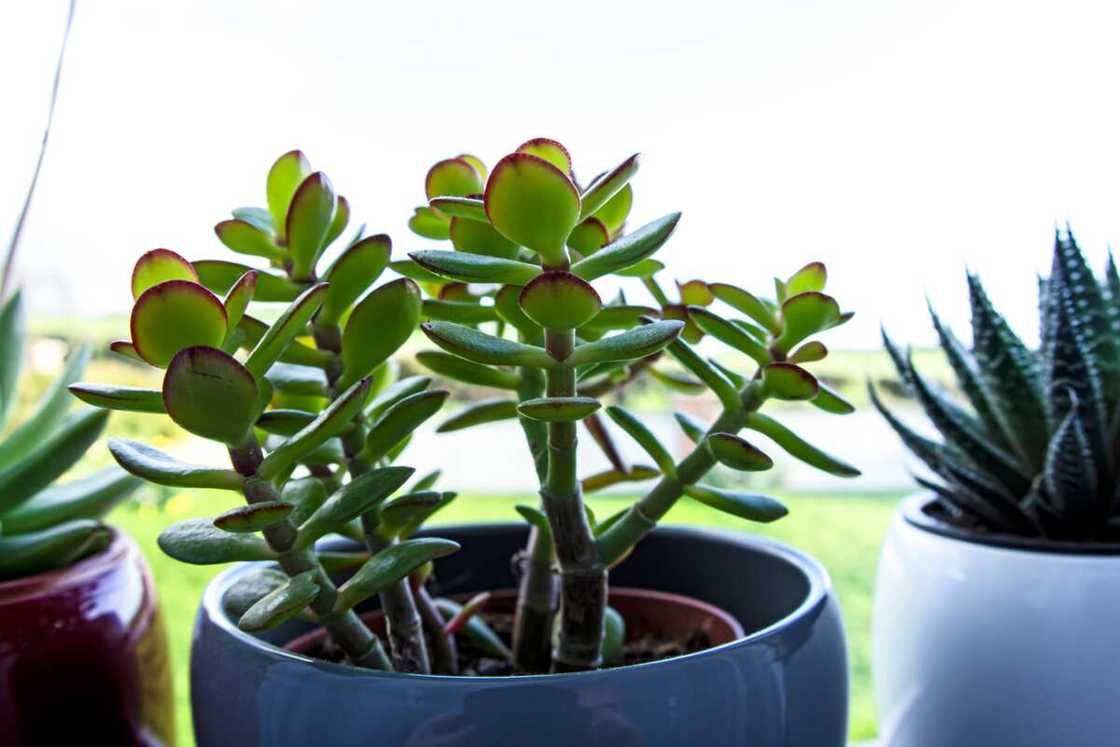
Source: Getty Images
The money tree (Pachira aquatica) is a houseplant believed to bring good luck and prosperity. It has a unique appearance with a braided trunk and lush, palmate leaves. Its leaves are typically glossy and dark green, creating a vibrant and lively presence in any outdoor space.
30. Panda Plant (Kalanchoe tomentosa)
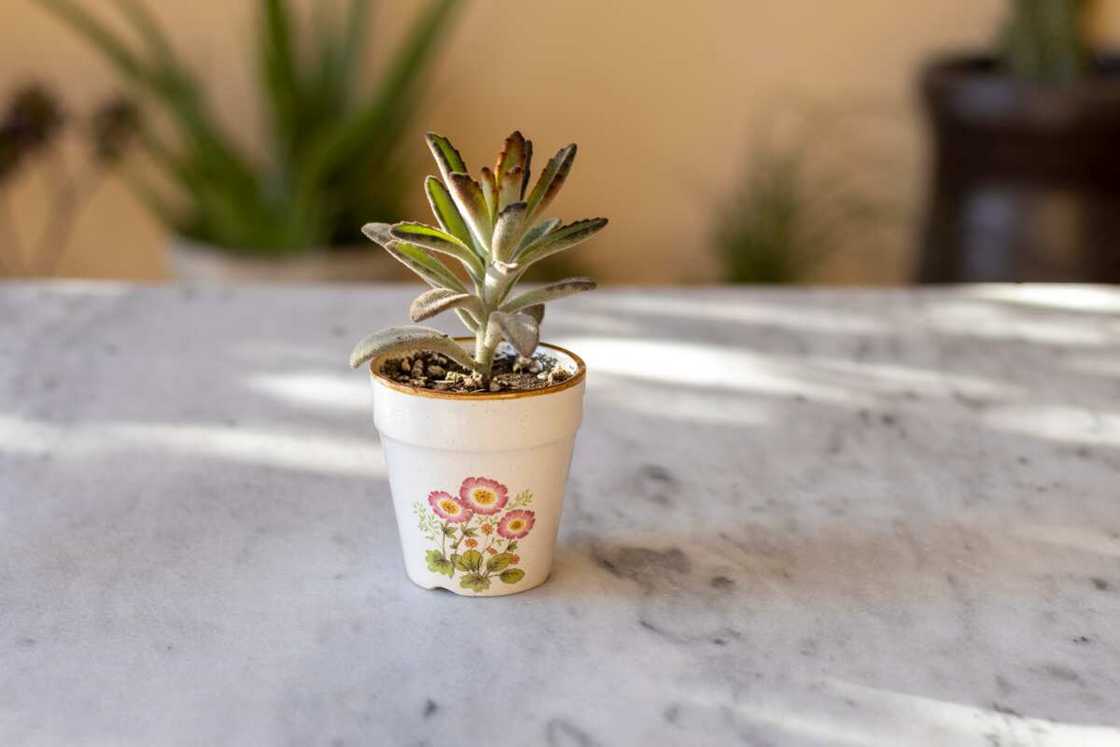
Source: Getty Images
Panda Plant (Kalanchoe tomentosa) is visually appealing succulent captures attention with its fuzzy, silvery-green leaves. Its leaves are covered in soft, fine hairs, giving them a velvety texture.
What are some examples of plants that thrive in low-light conditions?
Lisa Eldred Steinkopf, a renowned houseplant expert, explained in an interview that while few plants truly thrive in low-light conditions, several resilient options can adapt and flourish with minimal upkeep. Below are some of the recommendations she brought forward:
- Peace lily or Spathiphyllum lily – does well in lower light conditions and may continue to flower.
- Scindapsus ‘Jade’ – does well with lower light conditions. It has thick, dark green leaves. Even the regular Scindapsus will do well, but the dark green is more tolerant of low light.
- Cast Iron plant or Aspidistra—This plant can tolerate low light. It is called a cast iron plant because it can take a lot of abuse and do well. This plant was in Victoria parlors and tolerated low light and less-than-stellar air quality conditions.
- ZZ plant—It will also do well in low-light conditions. This plant has large water-storing rhizomes or roots, so ensure you don’t give it too much water.
- Pothos (Epipremnum) – It will do well in low-light situations but lose its variegation.
- Calatheas – It will tolerate low light, and ferns will.
Steinkopf notes that while these plants can tolerate low light, they would ideally thrive in brighter settings.
How do these plants adapt to environments with minimal sunlight?
The Houseplant Guru explained how these plants have evolved to survive in low-light conditions. She said:
Plants in lower light conditions are dark green and have larger leaves. They need all the photosynthesizing area and green coloring they can get to gather all the 'food' they need. Yet even high-light plants can acclimatize to low-light conditions. They won’t do as well as they would in high light but will survive. Low-light tolerant plants grow on the jungle floor beneath towering rainforest trees. They grow in the shade, yet the shade in nature is still brighter than the sun in our homes.Tips from expert
Steinkopf provides tips on effectively caring for and maintaining plants that don’t require much sunlight. She advises:
Plants in lower light situations aren’t photosynthesizing as much as plants in higher light. Therefore, they will use less water. So, plants in lower light situations must be watered carefully so they don’t stay wet too long, which will lead to root rot.Feel free to get yourself any of the plants that don't need the sun to grow and maintain shared above. They will bring a touch of natural beauty, enhancing the aesthetics of your home, office, and other environments. Most of these houseplants require minimal upkeep.
Legit.ng recently published an exciting piece about fascinating facts about sunflowers to make your day brighter. Sunflowers are one of the most beautiful plants on earth. Kids love them due to their bright colors.
Sunflowers were first grown in North America but later spread to other parts of the world. They are interesting plants, from how people perceive them to their behavior. Sunflowers’ uses range from decorative appeal to food, oil, and wildlife support.
Source: Legit.ng
















 English (US) ·
English (US) ·